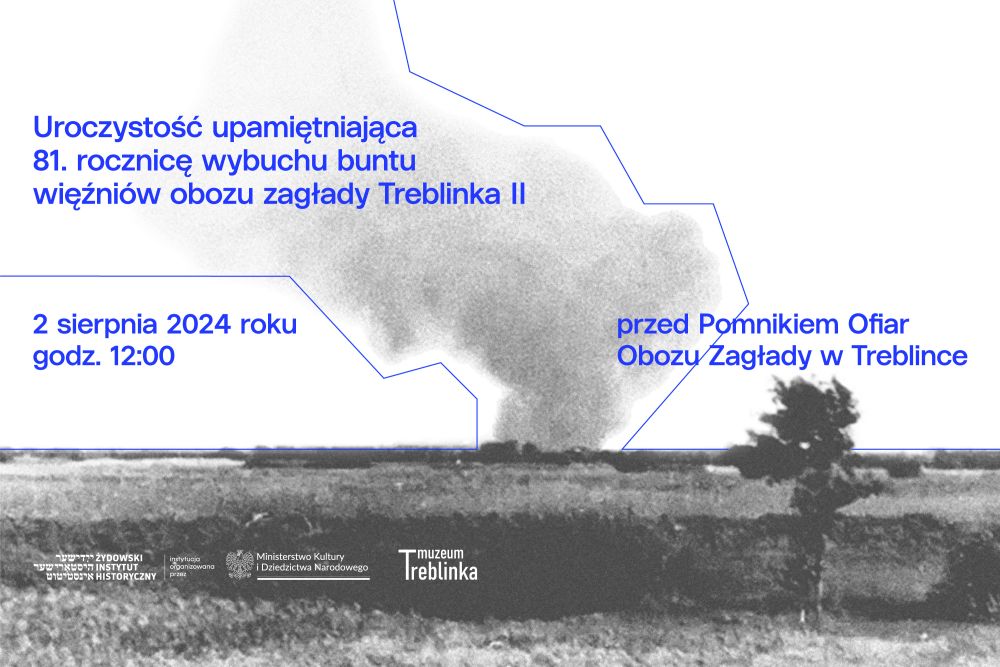- News
- Events
- Oneg Shabbat
- Collections
- Research
- Exhibitions
- Education
- Publishing Department
- Genealogy
- About the Institute
- Bookstore


The ceremony will begin on 2 August 2024, at noon at the Treblinka Museum. German Nazi extermination and labour camp (1941–1944).
The event will be translated into Polish Sign Language and English.
The Jewish Historical Institute is organising a bus transfer to the Treblinka Museum. If you are interested, please apply using the form by Monday, 29 July: https://forms.office.com/e/VVZ4feENT3
Schedule of the ceremony:
9:00 a.m. – departure (assembly from 8:30 a.m. at Bankowy Square, behind the Juliusz Słowacki monument)
11:30 a.m. – transfer* to the site of the Death Camp at the Central Monument
Noon – ceremony at the Central Monument
1:30 p.m. – return to the Museum building
1:30 p.m. – presentation of the open-air exhibition ‶Artystyczny świat utracony. W hołdzie artystom zamordowanym w Obozie Zagłady w Treblince”
1:45 p.m. – refreshments for all guests
3:00 p.m. – departure for Warsaw
* The Treblinka Museum provides transportation to the Monument for persons with limited mobility.
_____
About the exhibition:
The open-air exhibition consists of ten plaques providing a brief historical overview of the Treblinka II extermination camp and several profiles of artists murdered in the camp. The exhibition is illustrated with photographs of artists' works and artefacts found at the death camp. The exhibition is organised by the Treblinka Museum. German Nazi extermination and labour camp (1941–1944). The exhibition curator is Anna Remiszewska, assistant professor in the Educational Department of the Treblinka Museum. The exhibition will be presented at the Museum car park.
_____
The German Nazi extermination camp Treblinka II was opened on 23 July 1942. On that day the first transports of Jews from the Warsaw Ghetto arrived there.
For almost a year and a half, transports from central Poland and other countries of occupied Europe arrived at the camp. Every day, the Germans murdered approximately 5–10 thousand people in gas chambers using exhaust gases from a tank engine.
Of more than 700 prisoners who had taken part in the August 2, 1943 revolt, around 200 managed to escape the camp, and about a hundred survived until the end of the war. Treblinka was almost completely burned down. After the revolt, Germans began to liquidate the camp, they took down all the buildings and constructions, ploughed the site and planted lupin everywhere so that there would be no sign of one of the worst crimes in history.
Treblinka is the largest cemetery of Polish Jews and one of the largest cemeteries of Polish citizens. Nearly 900,000 Jews and Jewish women were murdered there, mainly from Warsaw, Bialystok, Mazovia and Podlasie, but also from Slovakia, Greece, Yugoslavia and Bulgaria, and about 2,000 Roma. The names of only about 100,000 of those murdered are known.
_____
The Treblinka Museum. German Nazi extermination and labour camp (1941–1944) is a partner of the event.